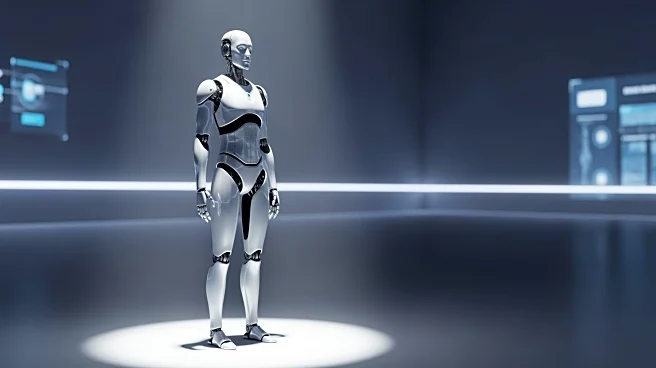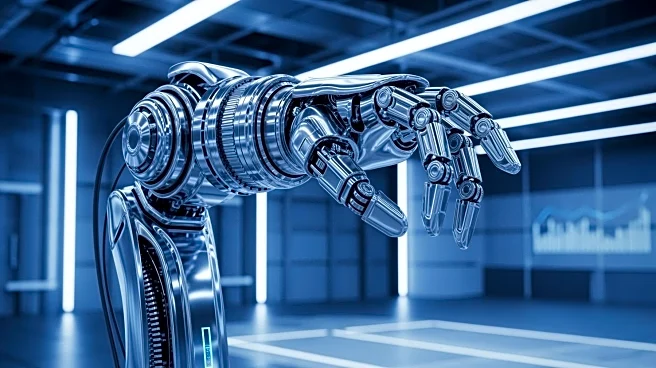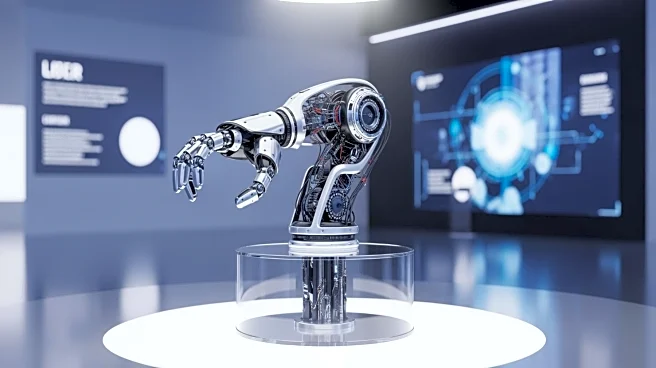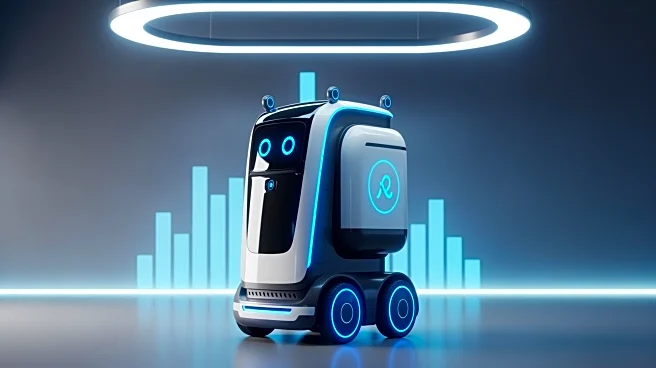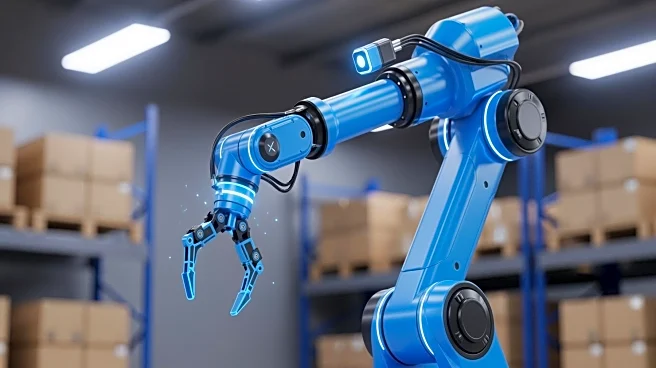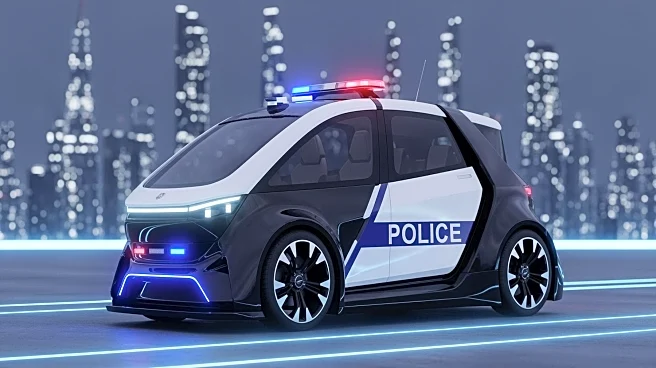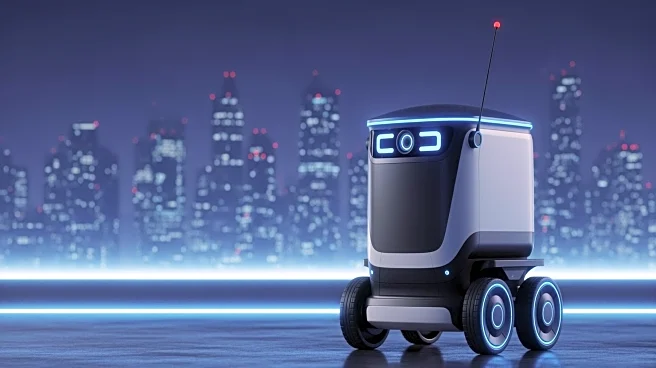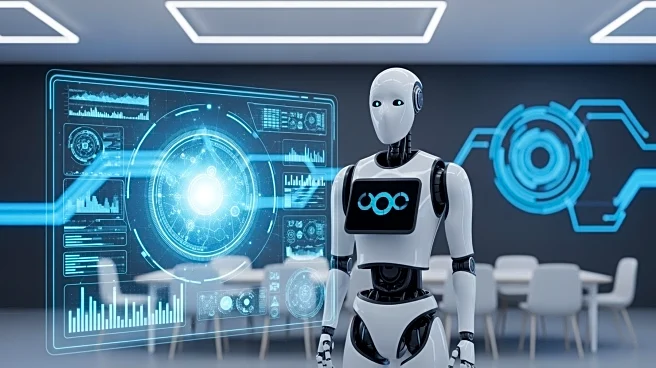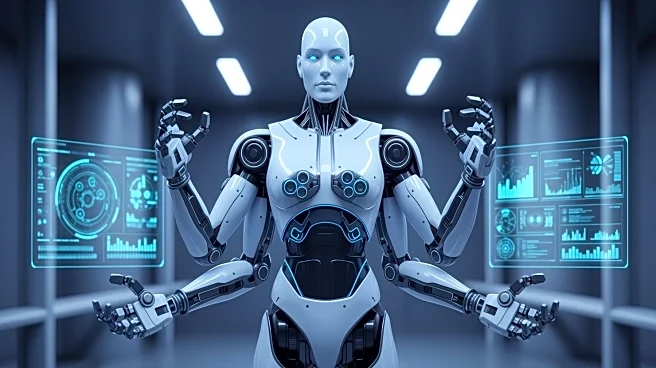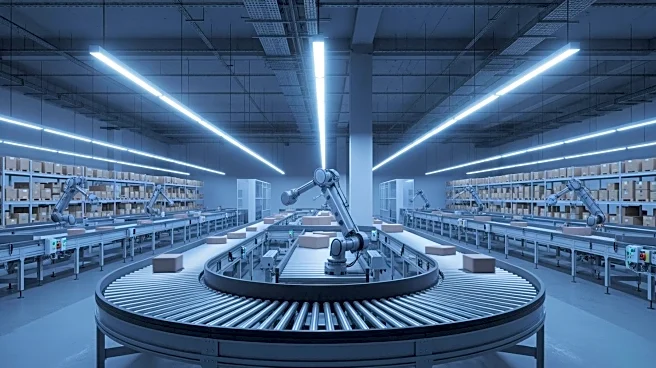What's Happening?
The development of humanoid robots is at a critical juncture, as industry leaders search for a 'killer app' that would make these machines indispensable. Despite impressive demonstrations, such as Tesla's
Optimus robot performing a kung fu routine, humanoid robots have yet to find a defining use case that would justify their widespread adoption. Historically, technologies like personal computers and mobile devices became essential due to specific applications, such as spreadsheets and mobile email. Humanoid robots, however, remain in a phase of impressive capabilities without a clear, indispensable purpose. Companies like Tesla, Figure AI, and Agility Robotics are competing to find this breakthrough, focusing on tasks that require dexterity and situational awareness.
Why It's Important?
The search for a 'killer app' in humanoid robotics is crucial for the industry to transition from novelty to necessity. A successful application could revolutionize sectors such as healthcare, logistics, and domestic services, potentially addressing labor shortages and enhancing productivity. The economic impact could be significant, with humanoid robots becoming a staple in homes and businesses, similar to how personal computers and smartphones transformed communication and work. However, the current limitations in dexterity and perception mean that humanoid robots are not yet ready for widespread deployment, keeping them in the realm of research and demonstration rather than practical use.
What's Next?
The next steps for humanoid robotics involve overcoming technical challenges related to dexterity, perception, and autonomy. Companies are increasingly using simulated environments to accelerate development, allowing robots to practice complex tasks in virtual settings. This approach mirrors the training of AI systems and could lead to breakthroughs in robot motion and control. Additionally, the industry is exploring shared learning models to enhance innovation across companies. The coming years will be pivotal in determining whether humanoid robots can evolve into practical tools or remain as impressive demonstrations without real-world utility.
Beyond the Headlines
The development of humanoid robots raises ethical and cultural questions about human-robot interaction and trust. As these machines become more human-like, they may influence societal norms and expectations regarding automation and labor. The potential for humanoid robots to integrate into human environments without bespoke re-engineering offers economic advantages but also challenges in ensuring safe and ethical deployment. The emotional response to human-like robots could play a significant role in their acceptance and integration into daily life.
